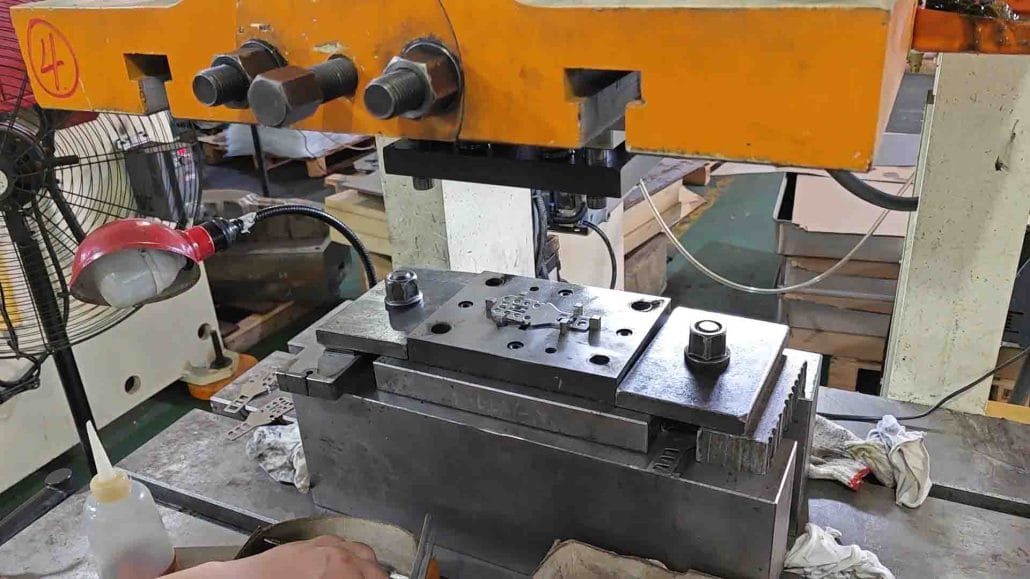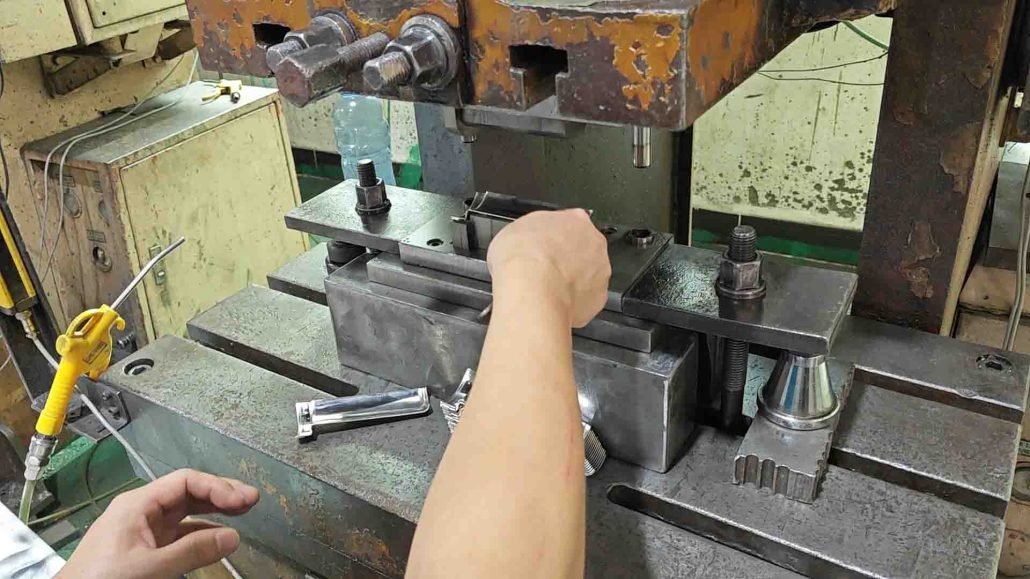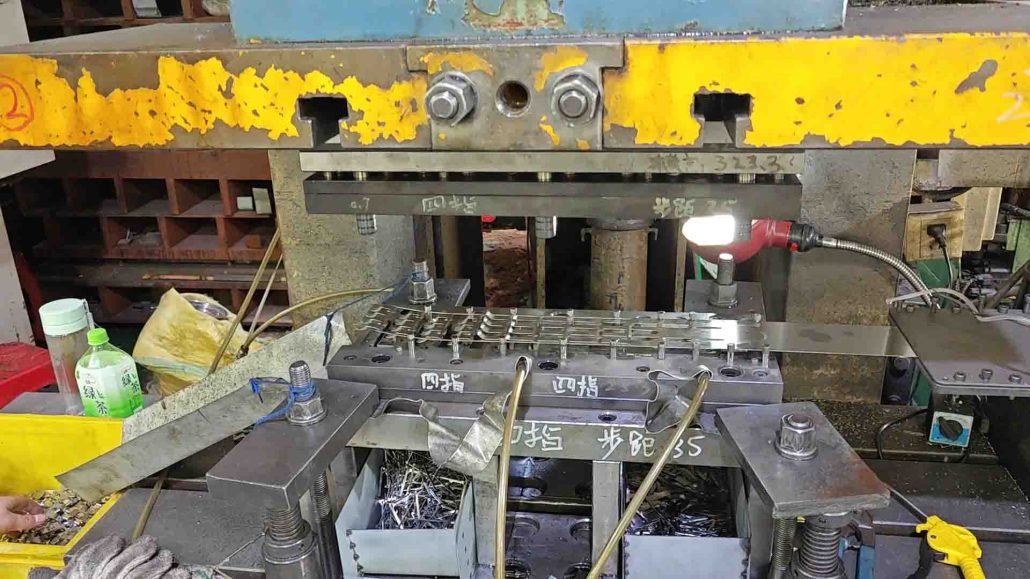When it comes to manufacturing, many people are confused about the various methods of manufacturing the products we use every day. The two most commonly used metal forming techniques are stamping and extrusion. Although both technologies have similarities, there are also some major differences between the two. In this article, we will explain what stamping and extrusion are, the differences between them, and which one may be most suitable for your specific manufacturing needs.
What is Stamping?
stamping forming process that involves the use of dies to shape and cut metal into the desired shape. This technique can be used on various types of metals and alloys, including steel, aluminum, copper, and brass. The process involves the use of a press, which applies high amounts of pressure to the metal being worked on. The pressure is used to stamp the metal into the desired shape and size. Stamping can be used to create complex shapes and precise designs, making it a popular technique for many applications.

What is Extrusion?
Extrusion is a manufacturing method that involves pushing heated materials through a die in order to produce a continuous length of the desired cross-sectional shape. This technique can be used on a variety of materials, including metals, plastics, and ceramics. Extrusion involves heating the material to a molten state and then forcing it through a die. The result is a product that has a uniform cross-section, making it an ideal method for creating tubes, pipes, and structural components.
Differences between Stamping and Extrusion
Although they have some similarities, stamping and extrusion are fundamentally different. Here are some of the key differences between the two techniques:
1.Design Complexity: Stamping is great for creating detailed and intricate designs due to the precision and accuracy of the die. Extrusion, however, is better suited for designs that are relatively simple and uniform.
2.Cost: Stamping is more expensive than extrusion due to the cost of creating and maintaining the die. It is only practical for small to medium-sized production runs. Extrusion is more affordable, making it the better choice for larger production runs.
3.Material selection: Stamping is ideal for thicker materials, such as metals, whereas extrusion can be used for a broader range of materials, including plastics and rubbers.
4.Production Volume: If you need to produce large quantities of parts or products, extrusion is the better option because it enables mass production. Stamping, however, is more suitable for small production runs.
5.In conclusion, the difference between stamping and extrusion boils down to the intricacy of the design, the material required, the cost and production volume. Both are extremely useful manufacturing techniques, but one may be better suited to your needs than the other, depending on the requirements of your project.

Dimensional accuracy of precision stamping parts
The dimensional accuracy of precision stamping parts is measured by tolerance registration. According to the national standard, it is divided into 20 levels, from IT01, IT0, IT1, IT2 to IT18.
The larger the number, the lower the tolerance level (machining accuracy), the larger the allowable range of size variation (tolerance value), and the smaller the machining difficulty.
The dimensional accuracy of stamped parts can generally be divided into two categories: precision level and ordinary level. Precision level refers to the precision that can be achieved in stamping technology, while ordinary level refers to the precision that can be achieved through more economical means.
When the precision of mold manufacturing is high enough, the precision of the outer dimensions of precision stamping parts can reach ITl0 level, and the inner hole size can reach IT9 level.
Benefits of Stamping
Stamping, also known as metal stamping, can offer a variety of benefits that may help you achieve these goals.we will explore the benefits of stamping and how it can help your business grow.
One of the major benefits of stamping is the ability to mass-produce parts with high accuracy and consistency. Stamping presses are capable of producing hundreds or thousands of parts per hour, making it a highly efficient process for large-scale production. In addition, the parts produced through stamping are made from high-quality materials that are durable and long-lasting.
Another benefit of stamping is the ability to create complex shapes and designs with ease. Unlike other processes like welding or forming, stamping allows for precise and intricate designs, making it ideal for creating custom parts or prototypes.
In the long run, stamping can save a lot of costs for enterprises. By using stamping parts, enterprises can reduce production costs and eliminate the need for additional processing steps, thereby reducing labor costs. In addition, compared to parts manufactured by other methods, stamped parts are less likely to require maintenance or replacement, and in the long run, this is a cost-effective solution.
In addition, stamping can help improve the quality of your products. The high precision and consistency of stamping parts ensure that your product meets the required specifications, thereby improving customer satisfaction and retention rate. It will also increase your business profits, making it an effective investment for your bottom line.
In summary, stamping provides several benefits for enterprises, including mass production, versatility, durability, and cost savings. By incorporating stamping into your manufacturing process, you can improve product quality, save money, and achieve your business goals. If you are considering incorporating stamping into your manufacturing process, please consult a professional to understand its benefits and how it can work for you. Looking for customized stamping and forming services to better complete your project

Benefits of Extrusion
Are you looking for a way to gain a competitive edge and increase efficiency in your business? Look no further than extrusion technology. Extrusion is a process that involves the creation of continuous lengths of material of a fixed cross-sectional profile, making it an ideal solution for a wide range of industries.
we’ll explore some of the many benefits of extrusion and how it can revolutionize your business.
First and foremost, extrusion allows for the production of complex shapes and designs with unparalleled precision. This means that your products will be of the highest quality, allowing you to ensure customer satisfaction and loyalty.
Furthermore, extrusion allows for the creation of materials with unique properties that are not available through other manufacturing processes. For example, the use of additives and fillers during the extrusion process can create materials with enhanced strength, rigidity, and thermal properties.
In addition to these benefits, extrusion is also incredibly efficient and cost-effective. The process itself is relatively quick and requires minimal labor, which means that your production costs will be reduced. Additionally, the ability to produce lightweight materials and minimize waste makes extrusion a sustainable manufacturing option.
But the benefits of extrusion don’t end there. This technology can also help you to streamline your supply chain and improve your overall production process. By producing materials in-house, you can reduce lead times, increase flexibility, and reduce the risk of product defects.
So, whether you’re working in the automotive, aerospace, or food industries, extrusion can provide a wide range of benefits that can help you to stay ahead of the curve. With its precision, cost-effectiveness, and sustainability, this technology is a game-changer for businesses.
In conclusion, it’s clear that extrusion technology has the potential to revolutionize your business. From enhanced product quality and unique material properties to reduced production costs and improved supply chain efficiency, there’s a lot to gain from incorporating this process into your manufacturing arsenal. So why wait? Start exploring the benefits of extrusion today, and take your business to the next level.
When to Choose Stamping
Stamping is a preferred option when it comes to creating smaller parts with intricate details. The technique is ideal for producing parts that require high precision since it can cut metals in exact shapes and sizes. This makes it perfect for items like latches, clips, and door handles.
When to Choose Extrusion
Extrusion is best used for creating products with a uniform cross-section, such as tubes and pipes. This technique is ideal for creating larger components that require strength and durability, such as building frames or automotive parts.Look for custom extrusion molding services to better complete your project
Conclusion
Stamping and extrusion are two different technologies commonly used in manufacturing. Understanding the differences between the two is crucial in determining which method is most suitable for your needs.
Although stamping is excellent for precision components with complex details, extrusion is ideal for larger components with uniform cross-section. Finally, it depends on what kind of product you want to create, so be sure to evaluate all options before making a decision.


